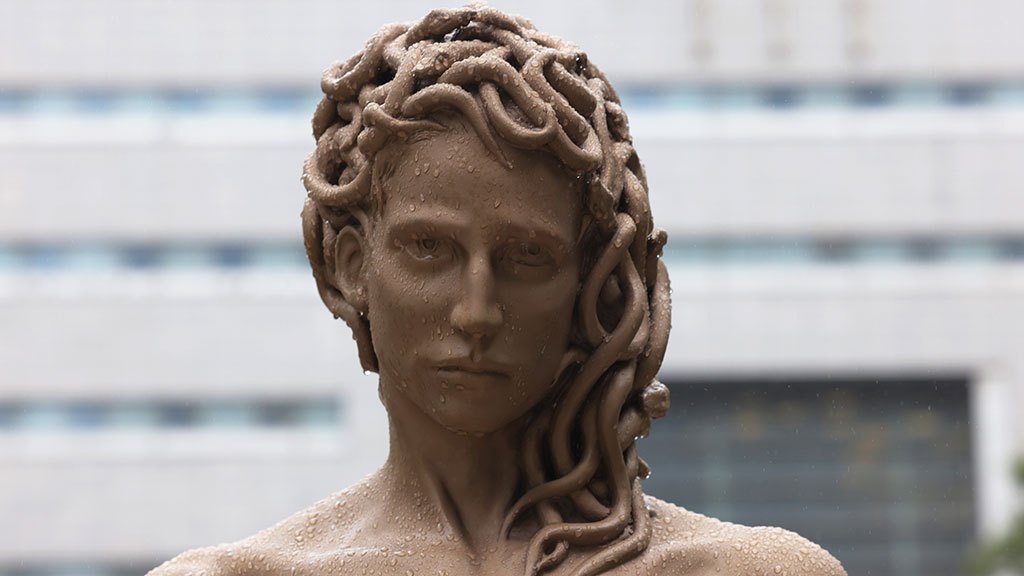In the majority of cases of sexual violence, the victim is always asked: ‘Well, what did you do to provoke him?’ Questions of ‘provocative’ clothing, alcohol consumption, and previous promiscuity consistently shroud crimes that should be putting the perpetrator on trial, not the victim.
This narrative of victim-blaming isn’t new – it can be seen in stories over 2,700 years old. Namely: the Greek myth of Medusa. A maiden in the temple of Athena, Medusa was stalked and raped by a ‘god’ named Poseidon. In a rage, Athena punished Medusa by cursing her with a head of snakes and a gaze which turned men to stone (sounds useful TBH). Blamed for her own rape, Medusa is eventually beheaded by ‘the greatest Greek hero’ Perseus, who displays her head as a trophy on his shield.
It’s a batshit story, which enforces the idea that women are at fault when they are sexually abused by men – a belief still held by a terrifying proportion of society today. However, a decade-old sculpture by artist Luciano Garbati turns this narrative on its head, depicting Medusa with the severed head of her killer, Perseus.
On Tuesday (October 13), this sculpture – aptly titled “Medusa With The Head of Perseus” – was installed in New York as a symbol of justice for survivors of abuse. On display until April 30, 2021, the statue is located outside the courthouse where Harvey Weinstein went on trial for his string of sexual crimes against women.
The 2008 sculpture found viral fame in 2018, following the resurgence of the #MeToo movement, and quickly became a symbol of resistance. At Tuesday’s unveiling of the statue, Garbati spoke about the thousands of women who had written to him about the sculpture, explaining that many saw it as cathartic.
The statue’s installation hasn’t been without its critics, though. Many have questioned why a piece of art meant to honour the #MeToo movement – largely led by women – was created by a man. Activist and writer Wagatwe Wanjuki commented on Twitter: “#MeToo was started by a Black woman, but a sculpture of a European character by a dude is the commentary that gets centred? Sigh.”
According to The New York Times, others have wondered why – if the statue is about justice for sexual assault survivors – Medusa carried the head of her killer, Perseus, and not her rapist, Poseidon. The answer to this lies in Garbati’s inspiration for the work, which came from a 16th century bronze figure by Benvenuto Cellini, called “Perseus With The Head of Medusa”.
Questions have also been raised about why Medusa is both naked, and depicted as having a model-esque figure. According to Garbati, the reason for this lies in the fact that artistic portrayals of Medusa began transforming from beastly to beautiful in the fifth century BC.
“It is fucking chef’s kiss that a man decided that the best way to represent rape victims was a sculpture with a banging bod and a hairless pussy,” said writer Kivan Bay.
Further addressing his critics, Garbati told NYT that the statue had taken on a life of its own, outside of his creation of it. “I would say I am honoured by the fact that the sculpture has been chosen as a symbol,” he said, adding that the whole project has helped him realise that he was a “product of a patriarchal society” himself.
Medusa With The Head of Perseus will be on view on Centre Street, Lower Manhattan, until April 30, 2021, as part of NYC Parks’ Art in the Parks programme

COMMENTS